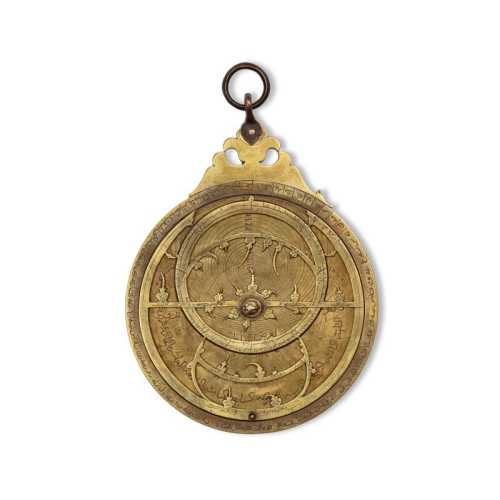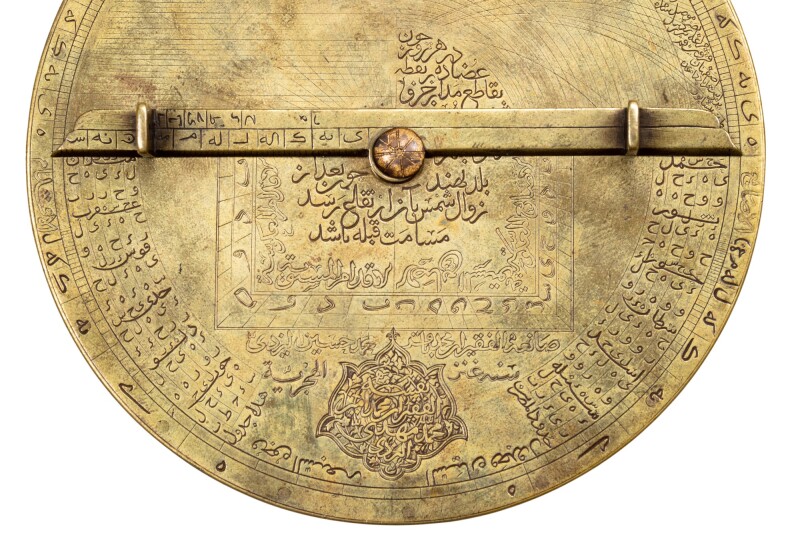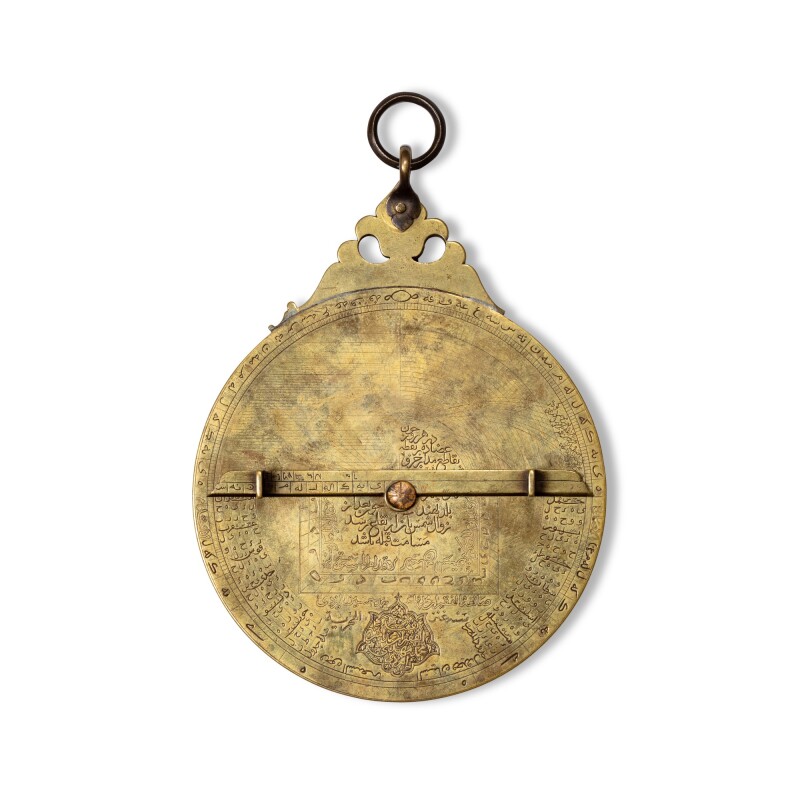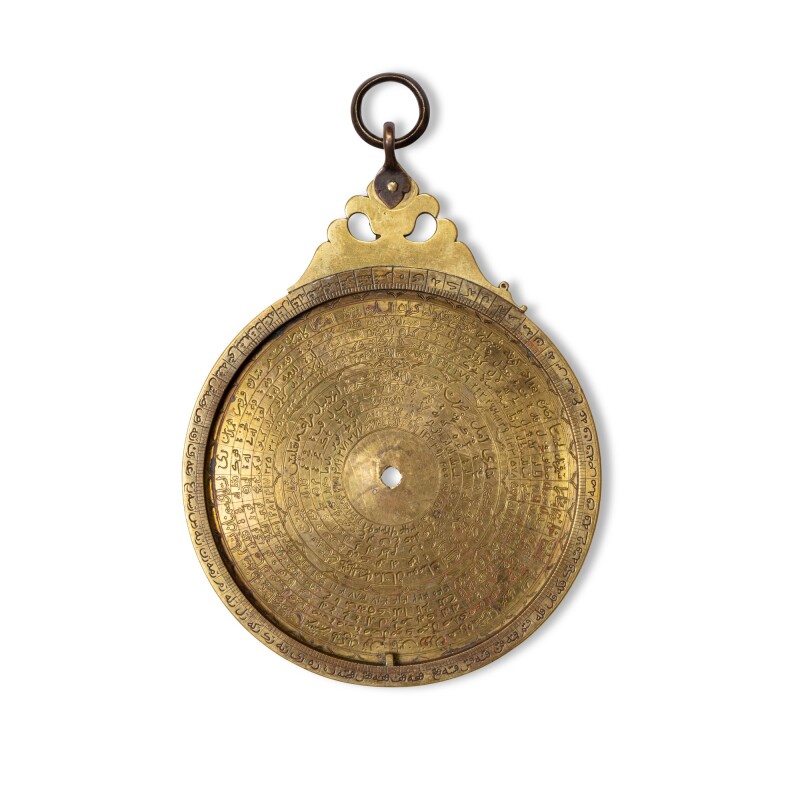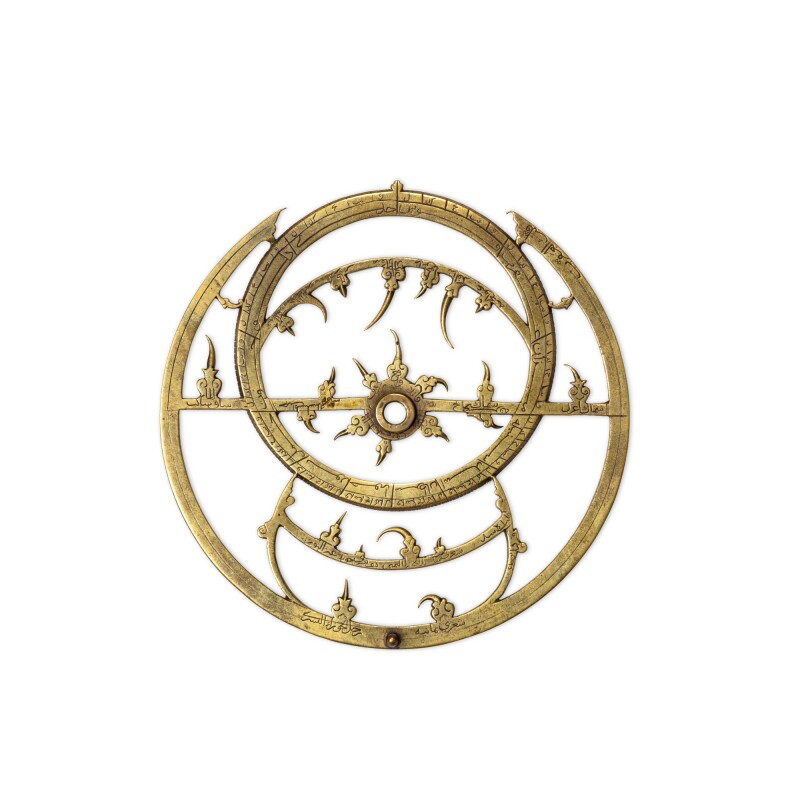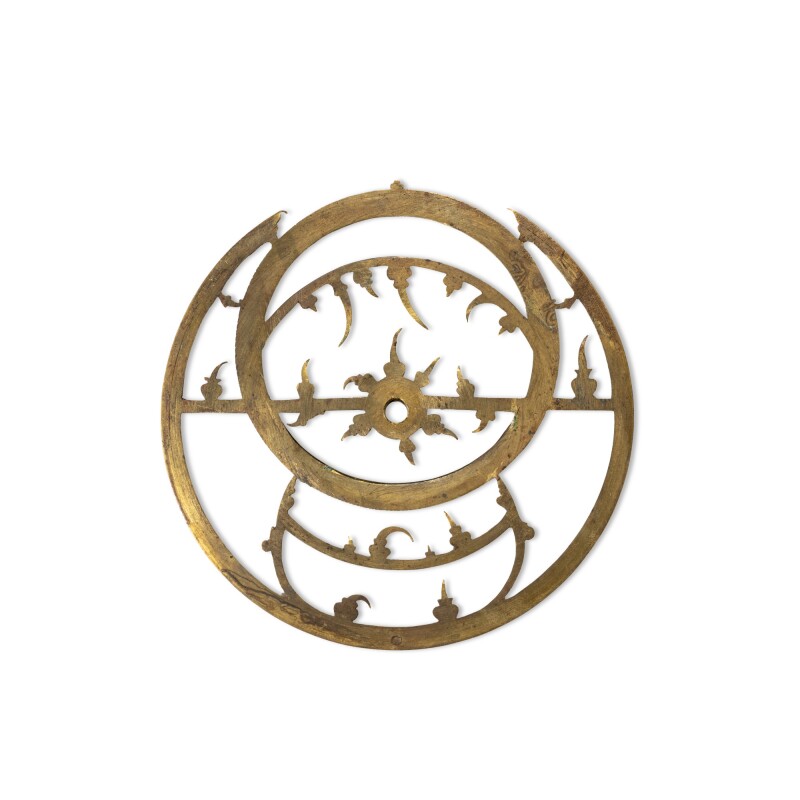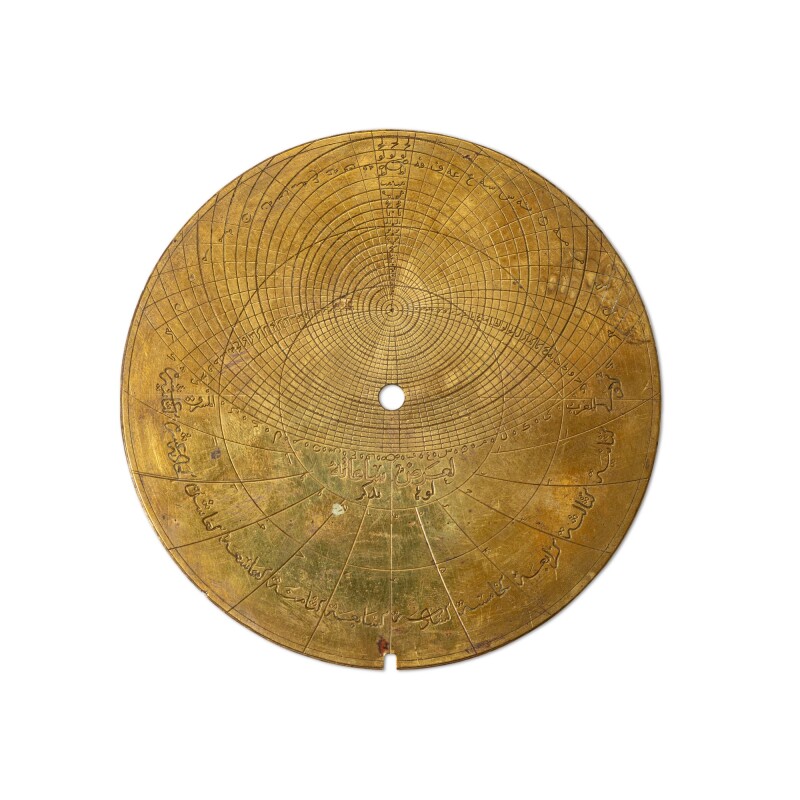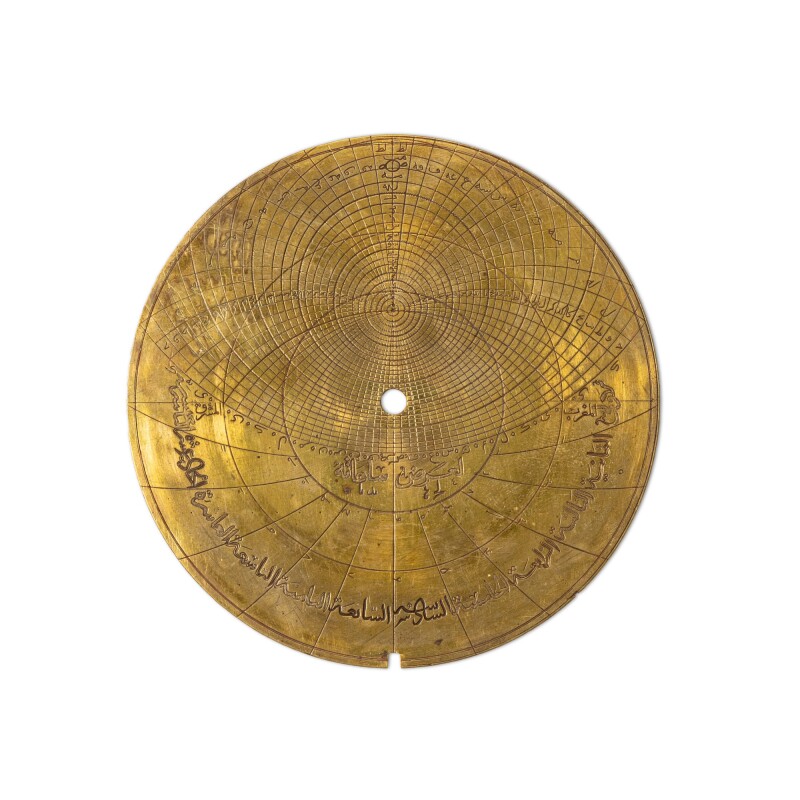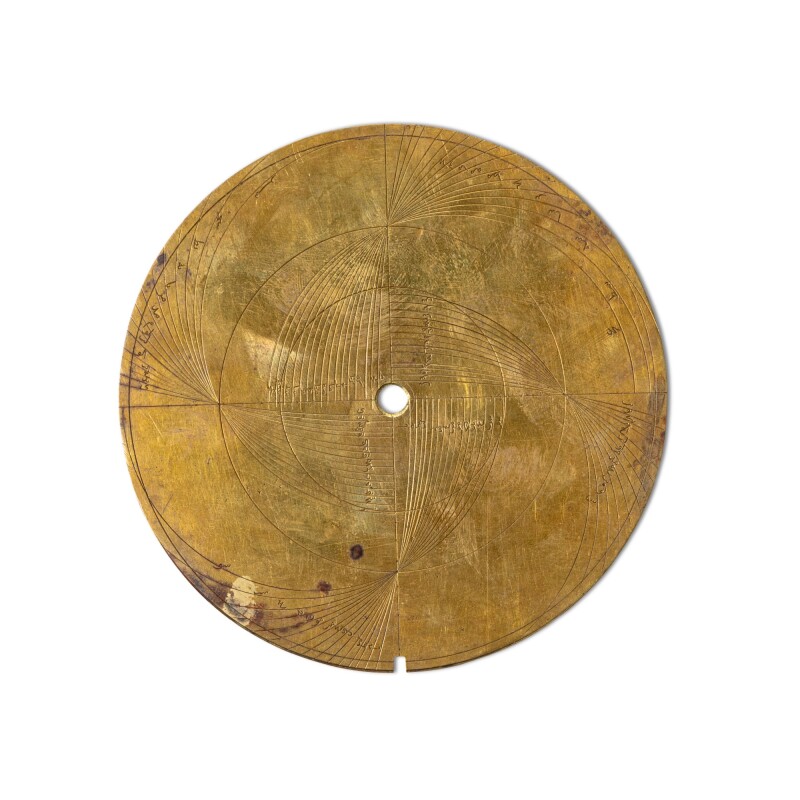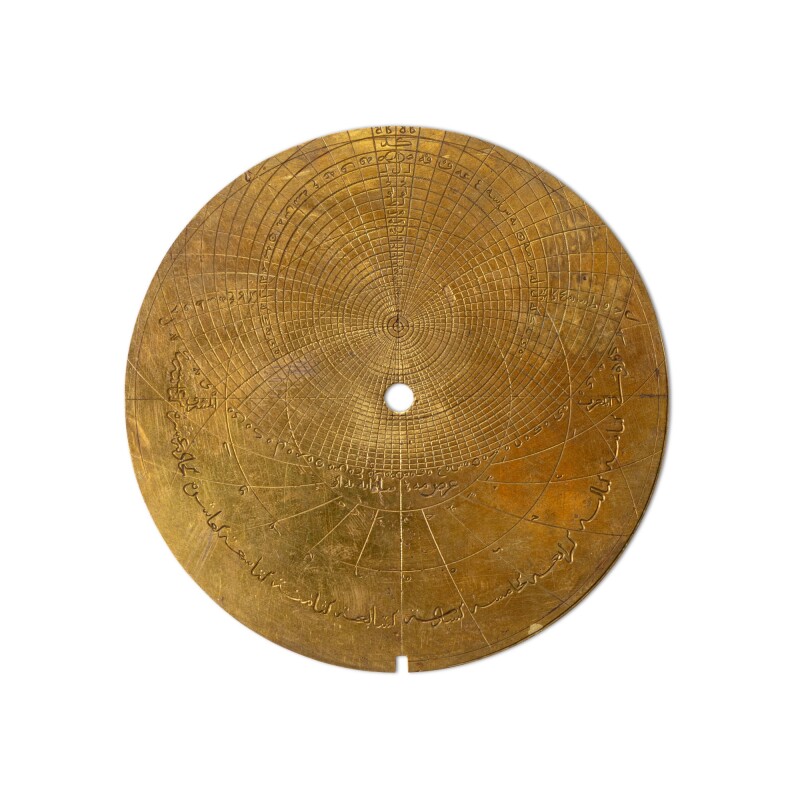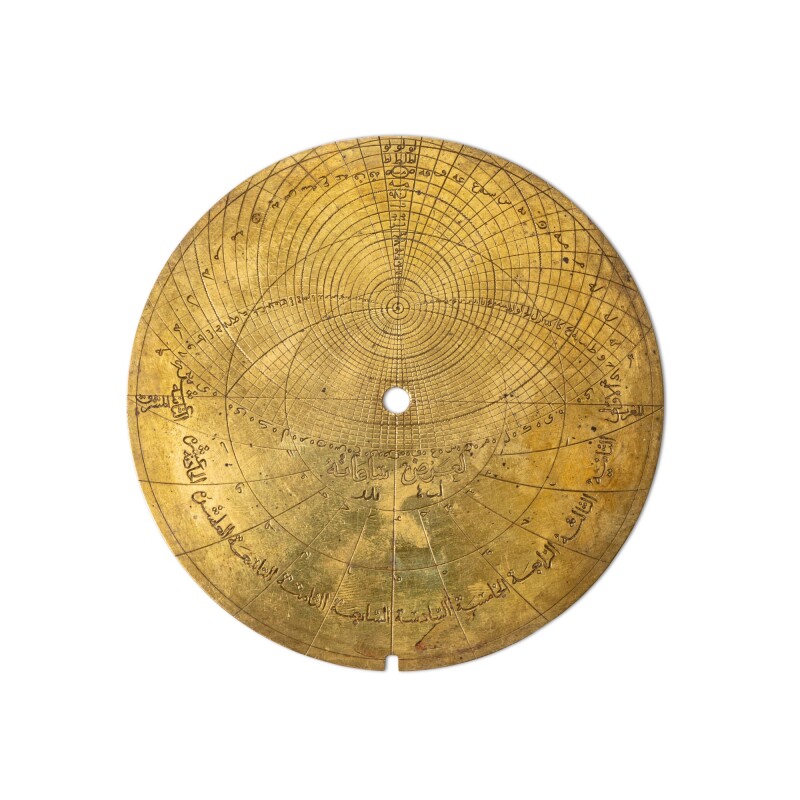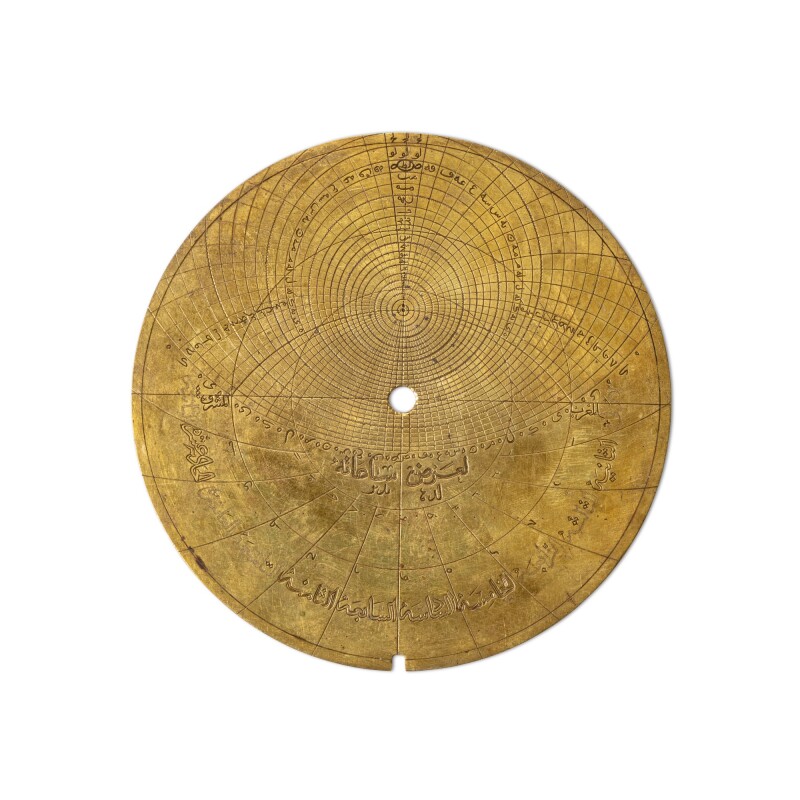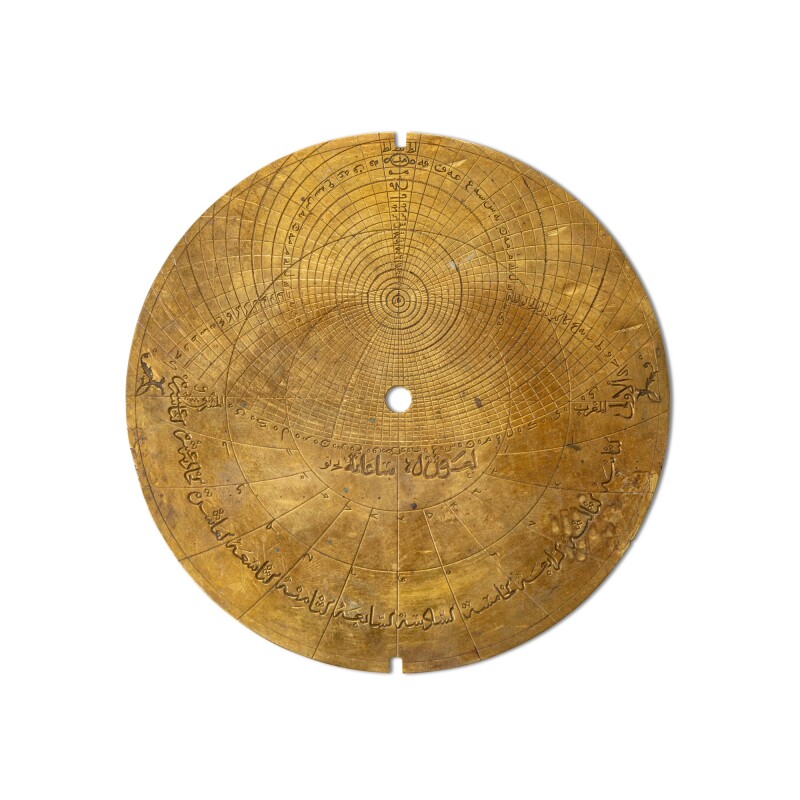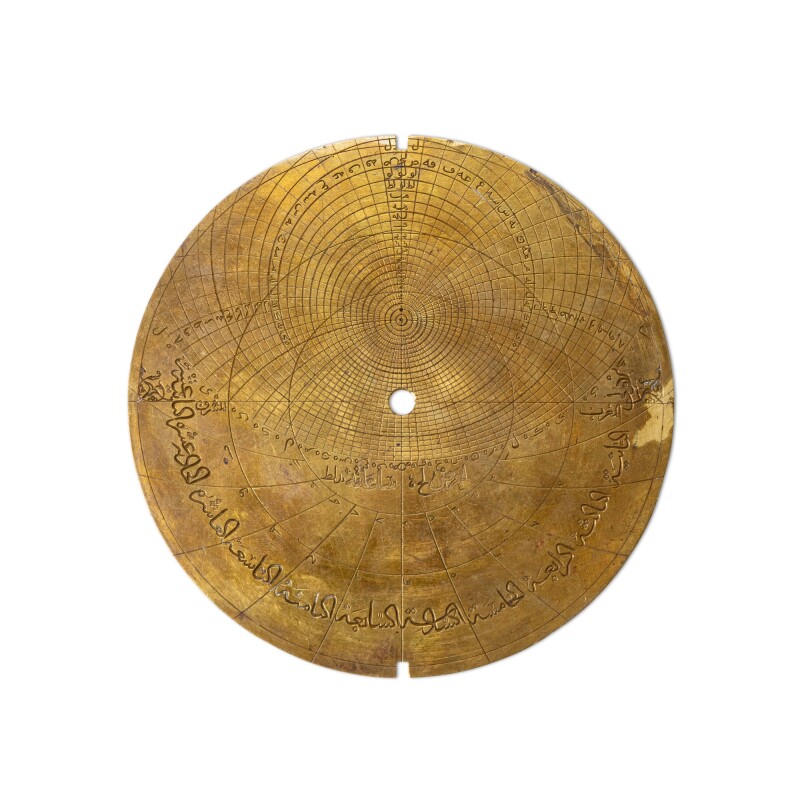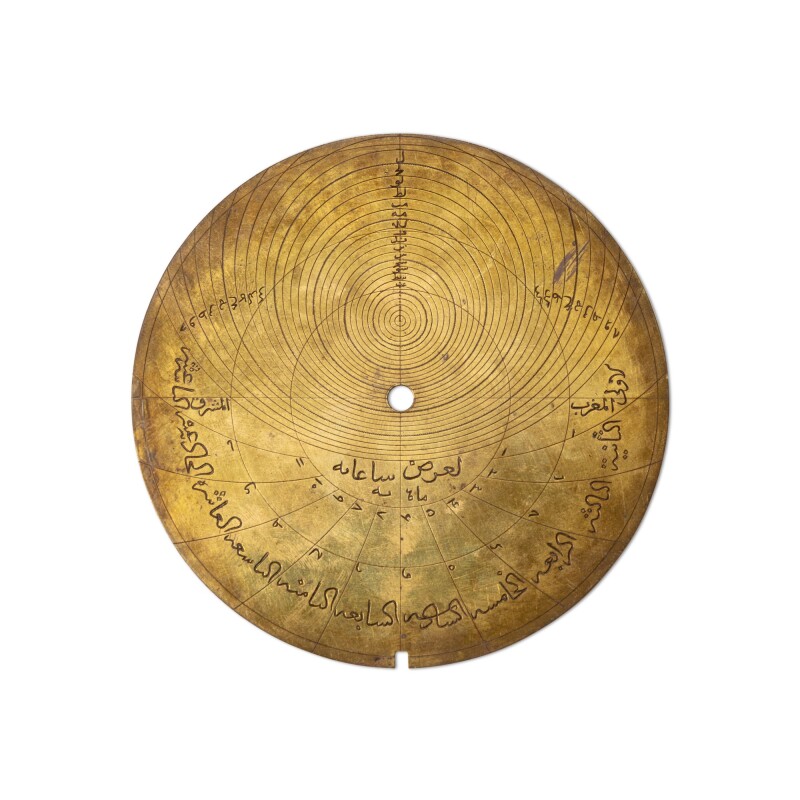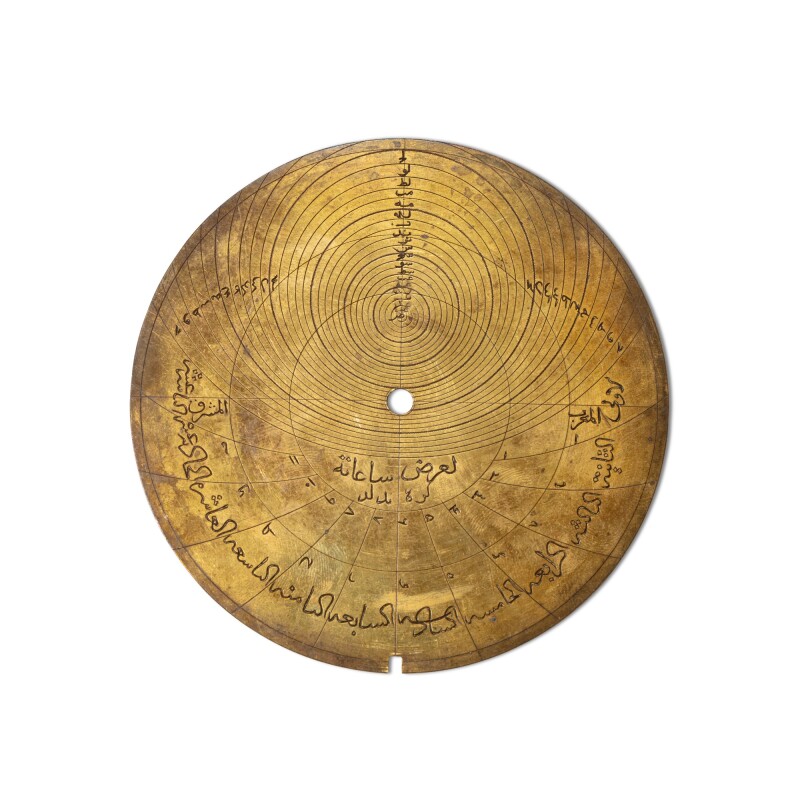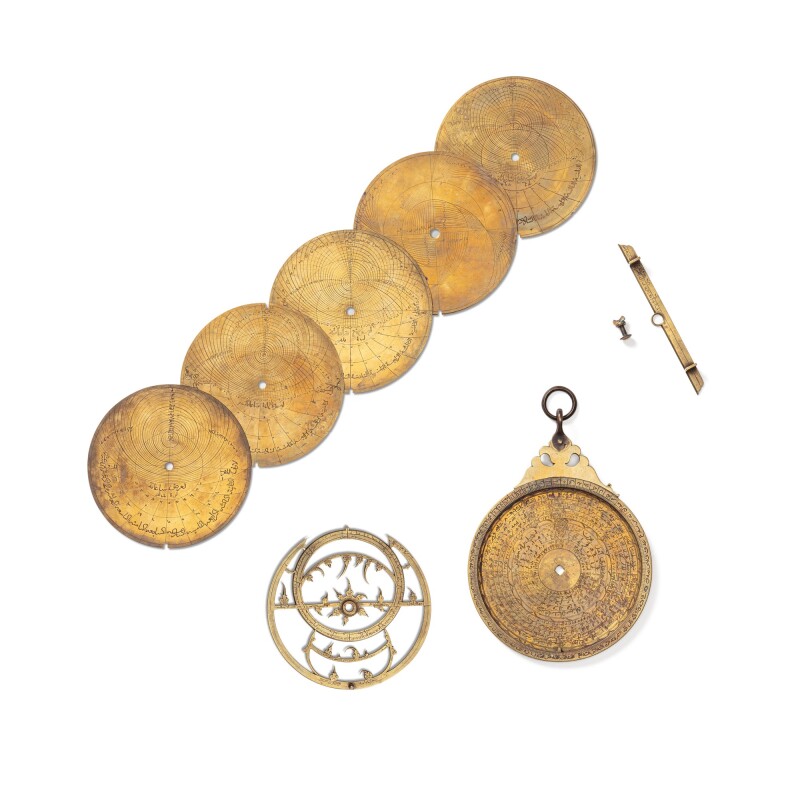- A fine Safavid brass astrolabe, signed by Muhammed Husayn al-Yazdi ibn Muhammad Baqir, decorated by Ibn Muhamad Amir, Muhammed Mahdi al-Yazdi, Persia, dated 1057 AH/1647-48 AD 1647 - 1648
- Handicrafts and classics, Metal
- cast brass, the mater with simple throne and hook, with original rete, hammered and engraved in elegant naskh, containing five plates engraved on both sides11.5cm. diam.
Estimation
£35,000
45,812 USD
-
£45,000
58,901 USD
Realized Price
£63,000
82,461 USD
57.5%
Artwork Description
This elegant astrolabe was made by two of the leading instrument-makers of Safavid Iran in the mid-seventeenth century: Muhammad Husayn al-Yazdi ibn Muhammad Baqir (the maker) and Muhammad Mahdi al-Yazdi ibn Muhamad Amir (the decorator).
The names of the makers of this fine astrolabe are recorded on the reverse of the mater: "made by (sana'ahu) ibn Muhammad Baqir, Muhammed Husayn al-Yazdi ", it also bears a date in abjad numerals (Gh-N-Z) which corresponds to 1057 hijri. Below there is a cartouche with the statement that the piece was "decorated by (naqqashahu) ibn Muhamad Amir, Muhammed Mahdi al-Yazdi."
Both these men are well-known members of the prolific school of instrument-making that flourished in seventeenth-century Isfahan and worked together. Their names are also recorded in an astrolabe made for Imam Mirza Razi al-Din Muhammad Husayni al-Mawsawi, sold in these rooms, 31 March 2021, lot 67.
Muhammad Husayn made one of three surviving world-maps engraved on circular brass plates that caught the attention of the scholarly world some twenty years ago. The maker's father, Muhammad Baqir al-Yazdi, was the leading mathematician of Safavid Iran who wrote many major treatises on astronomy and science and taught a number of the most prolific instrument makers of the Safavid period (see D.A. King, World-maps for finding the direction and distance to Mecca, Innovation and Tradition in Islamic Science, Leiden, 1999, p.131). For more on Muhammad Husayn see ibid, pp.255-6. For more information on the decorator, Muhammad Mahdi al-Yazdi, see L.A. Mayer, Islamic Astrolabists and their Works, Geneva, 1956, pp.70-71).
An astrolabe by Muhammad Husayn Baqir al-Yazdi, dated 1057 AH/1647-48 AD, was sold in these rooms, 24 October 2007, lot 188. An astrolabe signed by Muhammad Mahdi al-Yazdi, dated 1060 AH/1650-51 AD, is in the Nasser D. Khalili Collection of Islamic Art, inv. no.SCI161 (F. Maddison and E. Savage-Smith, Science, Tools & Magic, London, 1997, pp.250-1, no.144). A further comparable astrolabe by Muhammad Mehdi al-Yazdi is in the Museum of History of Science in Oxford (inv. no.46886), and another was sold in these rooms, 6 October 2010, lot 150.
More lots by Unknown Artist
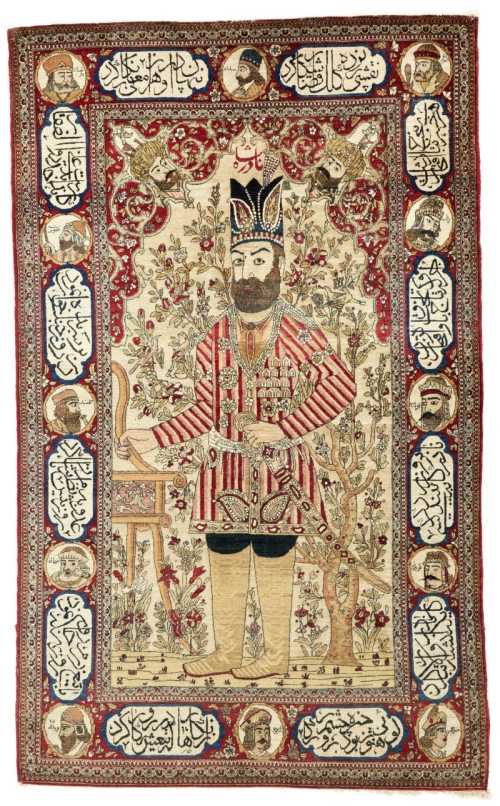
An Isfahan pictorial rug, Central Persia, circa 1910
Estimation
£4,000
5,236 USD
-
£6,000
7,853 USD
Realized Price
£5,670
7,421 USD
13.4%
Sale Date
Sotheby's
-
30 March 2022

A gold medal commemorating the coronation of Muhammad Reza Shah and Queen Farah
Estimation
£100
132 USD
-
£200
263 USD
Realized Price
£160
211 USD
6.667%
Sell at
Sale Date
Rosebery's Auction
-
1 April 2022
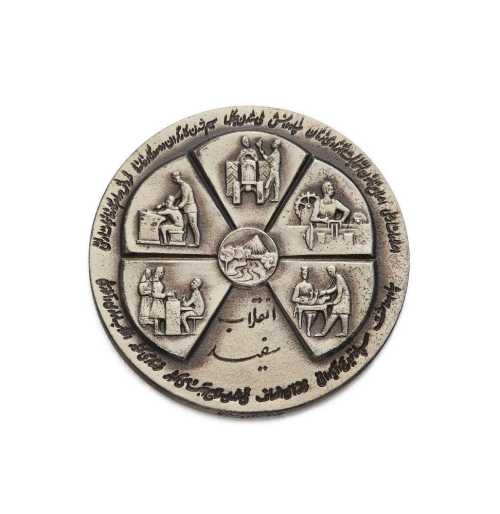
A silver memorial medal of the White Revolution, Muhammad Reza Shah, 1967
Estimation
£200
263 USD
-
£300
395 USD
Realized Price
£170
224 USD
32%
Sell at
Sale Date
Rosebery's Auction
-
1 April 2022
Realized Price
67,245 USD
Min Estimate
35,481 USD
Max Estimate
53,247 USD
Average Artwork Worth
+83.63%
Average Growth of Artwork Worth
Sales Performance Against Estimates
Average & Median Sold Lot Value
2021 - 2025
Performance vs. Estimate
2021 - 2025
Sell-through Rate
2021 - 2025
Similar Artworks
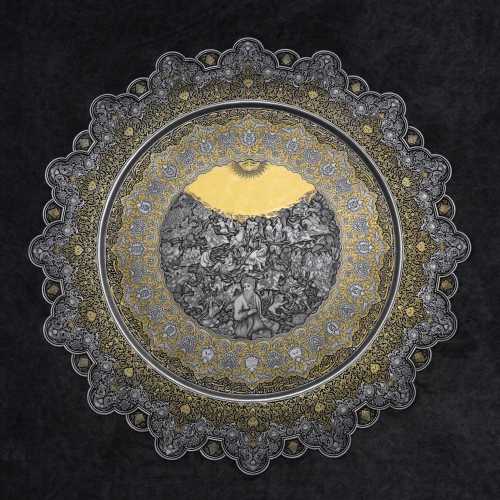
The Sun of Wisdom
Estimation
80,000,000,000﷼
94,118 USD
-
90,000,000,000﷼
105,882 USD
Realized Price
88,000,000,000﷼
103,529 USD
3.529%
Sale Date
Tehran
-
14 February 2025
